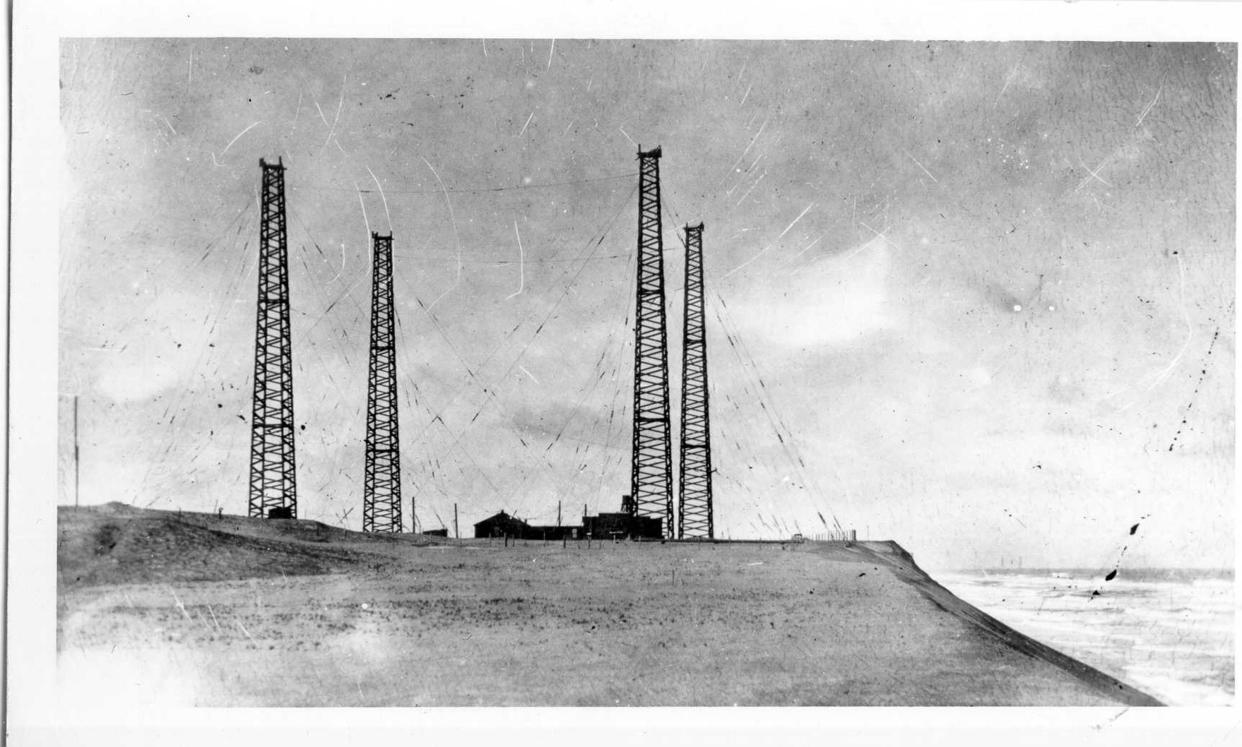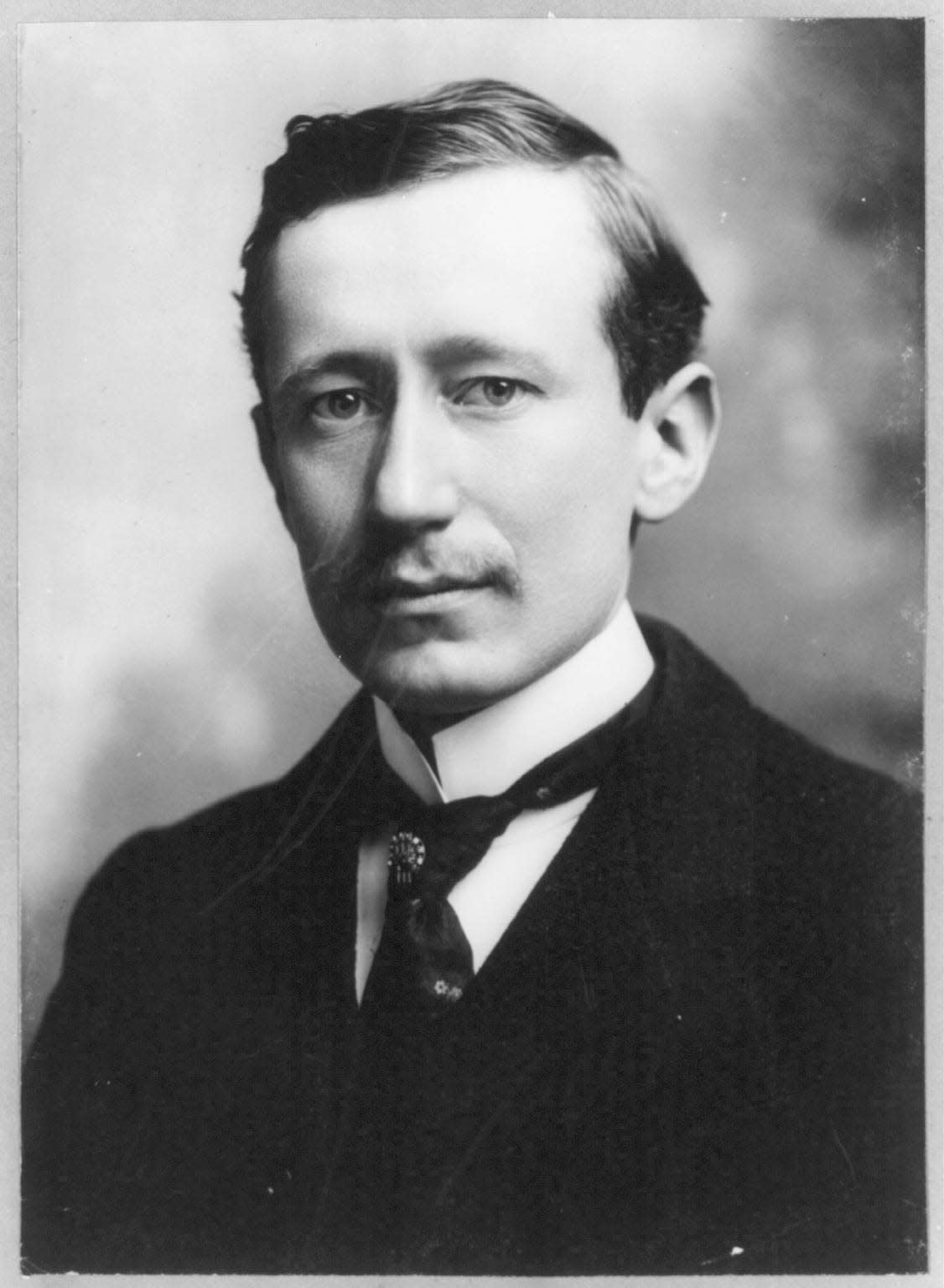'The Steve Jobs of his day': Chatham museum celebrates Marconi's Cape Cod legacy
Years ago, you could stand on a bluff in Wellfleet and yell at England and no one would get the message. It seemed impossible to quickly communicate with anyone across the mighty Atlantic Ocean through the air. Better go home and write a letter.
Then Guglielmo Marconi came along. The ingenious Italian inventor, born in 1874, "began dreaming of a way to send messages from transmitter to receiver without the aid of wires," according to the National Park Service. As he experimented and modified his equipment, the transmissions were able to be received from greater distances.
"I call him the Steve Jobs of his day," said Bob Fishback, president of the board of directors of the Chatham Marconi Maritime Center. "He stayed one step ahead of his competitors at the patent office."

With International Marconi Day coming up on April 27, nearly coinciding with his 150th birthday, we thought we'd take a look at Marconi's legacy and connections to Cape Cod. Folks can also celebrate the life of Guglielmo Marconi at the Chatham Marconi Maritime Center on April 27.
What did Marconi do on Cape Cod?
In the early 1900s, Marconi built a station in South Wellfleet and there was electricity in the air. On "January 18, 1903 the first public two-way wireless communication between Europe and America occurred. With elation, communiques from President Theodore Roosevelt and King Edward VII were translated into international Morse code at the South Wellfleet and English stations, respectively, and were broadcast," according to the Cape Cod National Seashore.
According to a 2003 Cape Cod Times story, the station included "four substantial 210-foot towers, jutting out of the barren tundra of the bluff. United States Lifesaving Service patrols were "spooked by the large, blue sparks that arced off the towers and the noise of the generators that could be heard miles down the beach," according to the story.
Wireless telegraphy also allowed ships to communicate while at sea. According to the National Park Service, "Effective communication resulted in numerous sea rescues, culminating in the Carpathia’s wireless-aided rescue of over 700 people from the Titanic in 1912."
The Wellfleet station was closed in 1917 by the U.S. Navy "to ensure security and news censorship during World War I," according to the Seashore. Marconi also built a station in Chatham in 1914, which eventually became "home to the largest ship-to-shore radiotelegraph station in the United States," according to the Chatham Marconi Maritime Center.

Who was Guglielmo Marconi?
According to the American Institute of Physics, Guglielmo Marconi was born in Bologna Italy on April 25, 1874. He was fascinated with the radio wave work of German physicist Heinrich Hertz and began working on wireless telegraphy systems. Much of Marconi's early work took place in England, and in 1901 he "transmitted the first transatlantic radio signal, between Cornwall and Newfoundland, a distance of more than 2,000 miles," according to the American Institute of Physics.
He shared the 1909 Nobel Prize in Physics with Karl Ferdinand Braun "in recognition of their contributions to the development of wireless telegraphy," according to the Nobel Foundation. Marconi died in Rome on July 20, 1937, according to the Massachusetts Institute of Technology.
How is the Chatham Marconi Maritime Center celebrating International Marconi Day?
The center's Marconi-RCA Wireless Museum will be open from 10 a.m. to 4 p.m on April 27. Visitors with a driver's license that shows a Cape or Islands address will be admitted free with their groups.
Fishback, president of the board of directors of the Chatham Marconi Maritime Center, said cookies and cake will be in attendance and visitors can find out more about Marconi's story, and watch the center's affiliated radio association participate in a worldwide International Marconi Day radio event.
Eric Williams, when not solving Curious Cape Cod mysteries, writes about a variety of ways to enjoy the Cape, the weather, wildlife and other subjects. Contact him at ewilliams@capecodonline.com. Follow him on X: @capecast.
Thanks to our subscribers, who help make this coverage possible. If you are not a subscriber, please consider supporting quality local journalism with a Cape Cod Times subscription. Here are our subscription plans.
This article originally appeared on Cape Cod Times: International Marconi Day on Cape Cod: Local museum celebrates legacy
